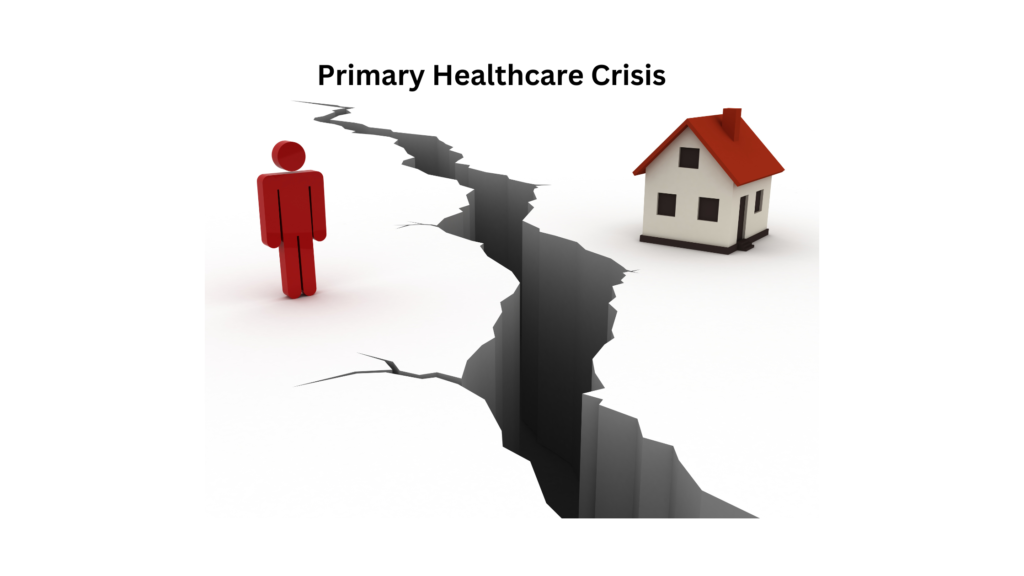Access to primary care in the United States has been steadily declining over the past decade, creating significant barriers for millions of Americans. This issue transcends geographic boundaries, affecting urban and rural populations alike. Long wait times, often exceeding a month, and challenges in establishing care for first-time patients have become increasingly common. Alarmingly, more than a quarter of American adults and over 10% of children lack a regular source of care. This trend persists despite federal initiatives like the Affordable Care Act, which expanded insurance coverage.
Primary care is the cornerstone of an efficient healthcare system. It serves as the first point of contact for patients and facilitates continuity of care, preventive services, and chronic disease management. Without robust primary care access, health outcomes worsen, and healthcare costs rise—problems the U.S. healthcare system can no longer afford to ignore.

The Shrinking Primary Care Workforce
At the heart of this crisis lies a critical issue: the dwindling primary care workforce. Systemic underinvestment and burnout among healthcare professionals have left the system unable to meet growing demand. Over the past two decades, the density of primary care physicians has steadily declined. In 2022, nearly 8% of U.S. counties lacked a single primary care physician, while the national ratio fell to just 83.8 primary care physicians per 100,000 population.
Aging within the workforce compounds the challenge. Many practicing physicians are nearing retirement, and there are insufficient numbers of new graduates entering the field to replace them. In 2021, only 15% of residents trained in primary care were practicing in the field three to five years after completing their residencies. The majority either pursued subspecialties or became hospitalists.
This dwindling workforce is not just a matter of numbers but also of geographic distribution. Rural areas are disproportionately affected, with residents often traveling long distances to access care or relying on emergency departments for primary care needs—a costly and inefficient solution.
Consequences of Limited Access
The consequences of limited access to primary care are far-reaching. Patients without regular primary care are more likely to delay seeking treatment, often waiting until their conditions become severe or life-threatening. This results in higher rates of emergency department visits and hospital admissions, increasing the overall burden on the healthcare system.
Moreover, preventive services such as vaccinations, cancer screenings, and lifestyle counseling suffer. Chronic conditions like diabetes, hypertension, and heart disease often go unmanaged, leading to complications that are both preventable and costly. Studies have shown that areas with higher primary care availability have lower mortality rates and better population health metrics, underscoring the critical role primary care plays in improving health outcomes.
Healthcare disparities are another significant concern. Communities of color and low-income populations are more likely to experience limited access to primary care, exacerbating existing health inequities. This lack of access contributes to poorer health outcomes and perpetuates cycles of disadvantage.

A Multifaceted Solution
Reversing the decline in primary care access requires a comprehensive approach that addresses workforce challenges, care delivery models, and systemic funding issues.
Expanding Team-Based Care
One promising solution is the expansion of team-based care models. These models utilize a multidisciplinary team, including nurse practitioners, physician assistants, pharmacists, and social workers, to provide comprehensive care. By redistributing tasks traditionally handled by physicians, team-based care alleviates the workload on primary care providers and ensures patients receive timely and appropriate care.
This approach has already shown success in certain health systems. For example, team-based care has improved chronic disease management and reduced emergency department visits by ensuring patients have consistent access to preventive and follow-up care. Scaling this model nationwide could significantly enhance primary care capacity.
Increasing Investment in Primary Care
Investment in primary care is another critical lever for change. Studies consistently demonstrate that higher spending on primary care correlates with improved health outcomes and reduced healthcare costs. For instance, if all healthcare providers in California matched the highest levels of primary care investment, the state could prevent 25,000 hospitalizations and nearly 90,000 emergency department visits annually, saving an estimated $2.4 billion in healthcare expenditures.
Policymakers must prioritize sustainable funding mechanisms that enable primary care practices to thrive. This includes payment models that reward value over volume, such as capitation and bundled payments, which incentivize providers to focus on preventive care and long-term health outcomes.
Supporting Workforce Development
Addressing workforce shortages requires both short- and long-term strategies. Financial incentives, such as loan forgiveness programs and competitive salaries, can attract medical students to primary care. Expanding residency slots in underserved areas and creating mentorship programs for early-career physicians are additional ways to strengthen the pipeline.
Moreover, addressing burnout among existing primary care providers is crucial. This involves improving working conditions, reducing administrative burdens, and fostering a culture of support and recognition within healthcare organizations.
The Role of Technology and Innovation
Technology offers a powerful tool for bridging gaps in primary care access. Telehealth, in particular, has gained traction as a solution for reaching patients in underserved areas. Virtual consultations can reduce wait times, increase convenience, and expand the reach of primary care services.
However, to fully realize the potential of telehealth, infrastructure and training must be prioritized. Both patients and providers need access to reliable technology and the skills to use it effectively. Policymakers must also address barriers such as broadband access in rural areas and reimbursement challenges for telehealth services.
Electronic health records (EHRs) are another area where technology can enhance primary care. Streamlining EHR systems to reduce documentation time allows providers to focus more on patient care. Additionally, advanced analytics can help identify at-risk patients and inform proactive interventions.
Addressing Geographic Disparities
Geographic disparities in primary care access require targeted strategies. Incentives for healthcare professionals to practice in rural and underserved areas are essential. These could include financial benefits, housing assistance, and career advancement opportunities.
Telehealth can also play a role in reducing geographic barriers, enabling patients in remote areas to consult with providers without the need for travel. Mobile health clinics and community health worker programs are additional strategies to bring care directly to underserved populations.
The Economic Case for Primary Care
The economic implications of inadequate primary care access are staggering. Preventable hospitalizations and emergency department visits due to unmanaged conditions drive up healthcare costs. Conversely, investing in primary care can yield substantial savings by reducing the need for expensive interventions.
For example, a study in Oregon found that every additional dollar spent on primary care was associated with a $13 savings in overall healthcare spending. These findings highlight the financial and clinical value of prioritizing primary care in healthcare budgets.
Looking Ahead
The primary care crisis is a defining challenge of our time. Addressing it requires a unified effort from policymakers, healthcare organizations, and communities. By expanding team-based care, investing in the primary care workforce, leveraging technology, and addressing geographic disparities, we can create a healthcare system where primary care thrives as its foundation.
This moment calls for action. The solutions are within reach; what remains is the will to implement them. As healthcare professionals and leaders, we must advocate for the changes that will ensure every American has access to the care they need.








